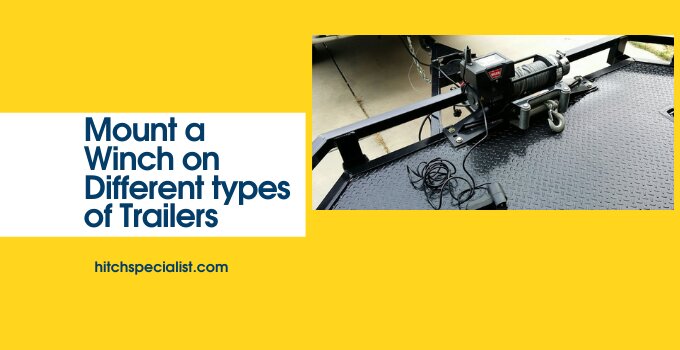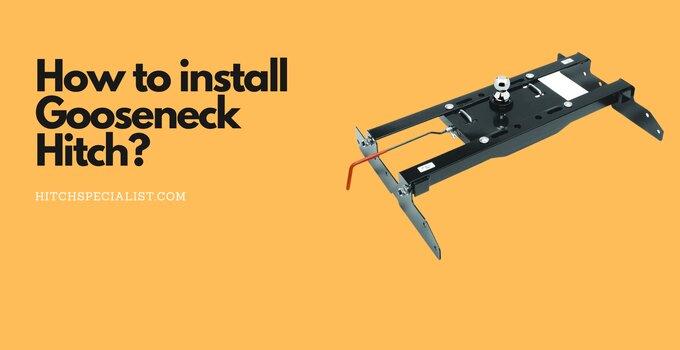Everyone who uses a trailer would be familiar with the very simple procedure of hooking up their trailer with such a piece of equipment. Ball couplings are the most popular type of hitch used to link trailers to their vehicles. However, it is not always clear how such couplings should be adjusted or tightened to fit the ball; therefore, it is just necessary to do so on occasion.
The coupler should be secure enough to the ball to prevent coupler displacement, but not too secure to prevent latch closure. The possibility of hitch failure is significantly raised when a driver or hitch-installer disregards any one of the foregoing rules.
A trailer may become loose and sway towards oncoming traffic if the hitch defects, or it may separate from the main vehicle. Without the volume or weight of the cargo, the consequences of even a partial trailer separation from the towing vehicle can be disastrous.
So, here we are going to discuss how you can tighten a hitch ball most easily. Read the article to the end to understand everything and also, we will talk about alternative methods on how you can tighten it.
Tools require
At home, you can rely on your nearby relatives, friends, and neighbors for assistance. Things may not function the same way at distant locations. If you travel alone, you might not have someone who can come to your aid right away if something bad happens. Therefore, it’s wise to carry the appropriate tools. Here are the necessary tools you may need to tighten a hitch ball properly.
- Pipe wrench
- Pliers
How to tighten the hitch ball? (Step by Step Instructions)
As long as you have the right ball size for your receiver hitch, attaching a tow ball to your car is a fairly easy operation. A ball on top, a long, cylindrical threaded shaft, a lock washer, and a nut—which holds the ball firmly in place on the receiver’s ball mount—make up the receiver hitch.
So, these are the basic steps you need to follow to place and tighten the hitch ball so that your journey becomes more perfect.
- Bring perfect size tow ball.
- Place the ball by maintaining an upward facing of the ball.
- Before inserting the tow ball into the tow ball mount, put the shin protector on.
- By hand tightening the nut and washer that are used to secure the tow ball, you can secure it.
Now the tow ball is in place. Shin Protector provides high visibility at night, protects shins from damage, and shields clothing from oil exposed by a tow bar. So, after completing this stuff let’s talk about how to tighten it,
Step 1. After Placing the nut and lock washer at the bottom of the shaft, then raise them until they are in contact with the ball mount.
Step 2. Now, tighten the nut firmly while preventing the ball from the top from moving around too much. Grab the ball with a pipe wrench or a sizable pair of pliers as one method of doing this.
Step 3. The bottom nut should be tightened using a different wrench until it is securely fastened. Make sure the nut and washer are tightly attached each time you tow.
Step 4. For the final check try to check the ball with your hand if it is still loose or not. If you find it loose then you should tight it with the wrench.
N.B. Hitch balls come in many different varieties. Hitch balls occasionally feature locking pins or grooves built into the base that make it possible to separate the ball from the rest of the assembly. Keep in mind that it’s crucial to obtain a suitable size ball and to install it properly. You shouldn’t play about with that little metal ball because it supports the weight of your 10,000 pounds or more items.
Alternative ways to tighten a hitch ball without a torque wrench
So, if you want to tighten a hitch ball then a wrench is an important tool to complete the operation properly. But if we talk about any kind of alternative methods then you can use pliers. I have a personal experience of using this method but let me tell you also what happened.
First of all, I had no wrench around me at that moment and my hitch ball was loose. So, I had a plier which was quite large and it was able to catch the grip of the nuts as my hitch ball was not that big and so the nuts were also small compared to other hitch balls.
So, I tighten it with my plier and it was good but for safety, after traveling for a while I took my friend’s wrench and tighten it more for safety. So, this method is not recommended as the wrench is the best tool. I did it I was lucky the plier fitted into the nuts and the hitch ball was not big. But not necessary it will fit yours always.
So, it’s an alternative method that is not recommended though.
Conclusion
The ball-shaped device that joins the trailer to the hitch is known as a hitch ball. The trailer can pivot thanks to the ball, allowing for easy turning while being towed. Although the hitch ball’s diameter is fairly uniform, there may be variations in the weight ratings. keeping your coupler (hitch ball) tight is very important as you are towing your valuable things on the road.
The tow vehicle becomes uneven and unpredictable due to a loose trailer. The drag and uncontrollable power of the trailer can cause a driver to lose control, which could lead to him swerving into other lanes, swinging toward oncoming traffic, or even jackknifing. Unsecured cargo spilling into the road or the trailer completely disconnecting from the car can potentially result in collision damage.
In this article, we tried to cover up all the things regarding tightening a hitch ball. So, try to follow all the steps and guidelines properly. Hope you like it and share it with your friends. Happy journey!
Also read other trailer hitch guidelines:



